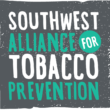
In the July issue of JAMA, Robert Jackler and Pamela
Ling discussed Medscape’s agreement with Philip Morris International to produce
continuing medical education on tobacco harm reduction. I objected to their
screed in a letter to the JAMA editor, noting that Jackler/Ling made
false claims about the course content and about me personally. I underscored that
JAMA’s stated goal is, “To maintain the highest standards of editorial
integrity and quality independent of any special interests,” and, “To foster
responsible and balanced debate on important issues that affect medicine,
health, health care, and health policy.”
Flouting those hallowed goals, three
and a half months later my letter was rejected.
Here it is in full.
The Viewpoint article by Robert Jackler and Pamela Ling
criticizes a financial agreement whereby Philip Morris International (PMI) paid
Medscape to produce free continuing medical education programs on tobacco harm
reduction (1). I
am writing because I designed the course material they incorrectly criticized,
and because they twice mischaracterized me as “tobacco conflicted.”
Jackler and Ling write in error that my 1994 study in Nature (2) found “no added mortality
from oral tobacco use.” My colleague and I doubled the conventional risk for
oral cancer and applied it to male smokeless tobacco (ST) users age 35+ years; the
average loss in life expectancy was 15 days, compared with a loss of eight
years for smokers. Furthermore, a 2016 study in the American Journal of Epidemiology by over 20 government-funded
coauthors revealed that American men who used moist snuff or chewing tobacco
had no excess risk for oral cancer (3).
Page 24 of Jackler and Ling’s supplement documents that they
err repeatedly by writing, “This course states chewing tobacco has ‘no
significant risk of mouth, lung and other cancers, heart disease or stroke,’
citing a much criticized 2002 review by a tobacco-conflicted course faculty
member…” First, they omit ‘emphysema’
from the quote. Second, it was ST, not
chewing tobacco. Third, I didn’t cite my
2002 review (4), and that review wasn’t “much criticized;” I cited two other
studies (5,6).
Jackler and Ling complain that my “expert opinion” disagreed
with the CDC’s claim that “Nicotine can harm brain development…until about age
25.” (7). They cite a review containing
“a sizable body of human data (8),” but it actually contains no evidence of
harm to brain development among human smokers, which is not surprising, as none
exists. There are 29 million current and
56 million former smokers in the U.S., the vast majority started as teens. No study has ever demonstrated that their
brain development was harmed by nicotine.
Jackler and Ling claim without citation that
course faculty highlighted “controversial reviews from the UK stating that
e-cigarettes are 90-99% safer.” Instead,
as their supplement reveals, I said that the harms of vaping are unlikely to
exceed 5% of smoking, and I provided citations to reports from Public Health
England (9) and the British Royal College of Physicians (10), one of the
world’s oldest and most prestigious medical societies.
Jackler and Ling are correct on one point. My statement, “The health goal for all
smokers should be smoke-free, not tobacco/nicotine abstinent,” is “remarkable,”
because 480,000 American smokers are dying prematurely every year due to the
smoke, not the nicotine.
References
1. Jackler RK, Ling PM. The tobacco industry has no business funding
continuing medical education. JAMA.
2024. Published online July 08, doi:10.1001/jama.2024.9241
2. Rodu
B, Cole P. Tobacco-related
mortality. Nature. 1994;370:184, https://pubmed.ncbi.nlm.nih.gov/8028661/
3. Wyss AB, Hashibe M, Lee Y-C, Chuang S-C,
Muscat J, Chen C et al. Smokeless tobacco use and the risk of head and neck
cancer: pooled analysis of US studies in the INHANCE consortium. Am J
Epidemiol. 2016;184(10):703-716. doi: 10.1093/aje/kww075.
4. Rodu
B, Cole P. Smokeless tobacco use and
cancer of the upper respiratory tract. Oral Surgery, Oral Medicine, Oral Pathology.
2002;93:511-515, https://pubmed.ncbi.nlm.nih.gov/12075196/
5. Rodu B, Plurphanswat N. Mortality among male smokers and smokeless
tobacco users in the U.S. Harm Reduction
Journal. 2019;16:50. https://harmreductionjournal.biomedcentral.com/articles/10.1186/s12954-019-0321-7
6. Fisher M, Tan-Torres SM, Gaworski CL, Black
RA, Sarkar MA. Smokeless tobacco mortality risks: an analysis of two
contemporary nationally representative longitudinal mortality studies. Harm
Red J. 2019;16:27. https://doi.org/10.1186/s12954-019-0294-6.
7. Centers for Disease Control and
Prevention. Health effects of vaping.
May 15, 2024 https://www.cdc.gov/tobacco/e-cigarettes/health-effects.html
8. Castro EM, Lotfipour S, Leslie FM. Nicotine
on the developing brain. Pharmacol Res. 2023;190:106716.
doi:10.1016/j.phrs.2023.106716
9. Public Health England. E-cigarettes: an evidence update. A report
commissioned by Public Health England.
August 2015 https://assets.publishing.service.gov.uk/media/5b6c3f57ed915d30f140f822/Ecigarettes_an_evidence_update_A_report_commissioned_by_Public_Health_England_FINAL.pdf
10. Royal College of Physicians. Nicotine without smoke: Tobacco harm
reduction. 2019 https://www.rcp.ac.uk/improving-care/resources/nicotine-without-smoke-tobacco-harm-reduction/




